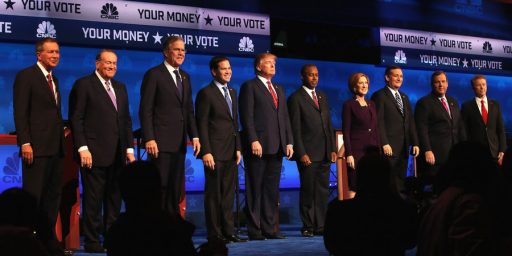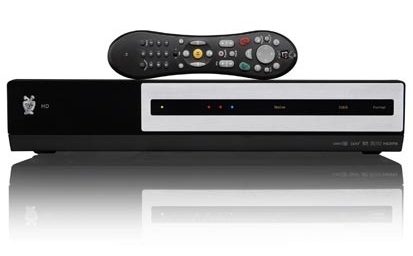Political Advertising In The TiVo Era
Will Digital Video Recorders kill the campaign commercial? Unfortunately, no.
Mistermix at Balloon Juice poses an interesting question about the impact of DVRs, commercial skipping, and delayed television viewing on political advertising:
There’s a lot of discussion about the impact of cell phone usage on polling, but what about the impact of another new technology, the digital video recorder (DVR) on the reach of political advertising? As of this Spring, 34% of US Households have a DVR. Media watchers see a correlation between the number of people watching a show on DVR and the median age of the viewer—DVR users tend to be younger.
Since voters tend to be older, perhaps TV ads are still a decent investment this cycle. But, as DVR adoption continues, I wonder if politicians will stop spending money on TV ads. In addition to reaching a smaller percentage of the population, TV ads are so expensive that most campaigns can’t do a lot of advertising until right before the election, so their effectiveness is even more questionable in early voting states.
It’s a valid concern for political strategists. After all, if a large block of voters is skipping over your commercials then you aren’t getting your message out, and while the DVR is still primarily something that younger viewers use on a regular basis, that will change as the technology becomes ubiquitous. Then, you’ll be at a point where everyone has the ability to fast-forward through that million dollar ad buy you just invested in.
There are a few caveats, though, that make it unlikely that campaign commercials will disappear for the foreseeable future.
First, there are some forms of television programming that typically aren’t watched on a delayed basis, specifically news and sports. As DVR use increases, you’re likely to see political advertising concentrated around these types of programs where the audience is more captive than it is for, say, Wednesday night’s Law & Order: Special Victims Unit. I’ve been watching the baseball playoffs all month, for example, and even though the part of Virginia I reside in doesn’t have any competitive races, I’m still seeing ads for candidates in surrounding Congressional Districts. Campaign ads are also showing up during the local and national news on the broadcast networks, and on the cable news networks. As long as that audience is still there, campaigns will continue buying ads.
Second, the types of programs that most people record on their DVRs, evening comedy and dramas, aren’t usually the ones where you see much political advertising to begin with. Partly this is because the commercial time for these shows belongs, mostly, to the networks rather than the local stations and it makes little sense for a Senate candidate in Nevada to buy national television time. Obviously, this will be different in a Presidential campaign year.
So as much as I’d like to see them go away forever, I think we’ll be living with campaign commercials for a long time time.







Living in a toss up state, I’ve learned to hit the mute button the second the commercials start.
Saturation point reached.
Yea I am pretty much the same way but, then, you and I aren’t the audience the commercials are aimed at
“you and I aren’t the audience the commercials are aimed at”
Haha, I have to agree seeing as I’ve already voted.
I agree, although I’m not looking forward to that development (increasing concentration of political ads around sports and other forms of live-watched programming). Television advertising is already one of the most expensive parts of a political campaign (particularly in large media markets), and concentrating it around sports and live programming would drive the demand (and thus the cost to advertise something there) for those spots even higher. On top of that, you’ll have all the major commercial advertisers competing for those sports as “timeshifting” in television viewing becomes more common.
On the other hand, maybe that will turn most candidates for office away from the idea of advertising via television altogether, which I consider a good thing. Better that more interactive forms of advertising and messaging become dominant again.
Good stuff. Two things:
First, one of the commenters on that post linked to this study
http://www.dukenews.duke.edu/2010/05/tivo.html
that found that people actually skip only 70% of the ads in shows that they record, and that they notice quite a few of those ads as they fly by.
I’m skeptical – my DVR allows 30 second skip forward so it’s pretty easy to miss most of the commercials. But maybe the true rate of commercial skip is lower that what I would have expected from my experience.
Second, the new trend is in-show advertising – how far are we from American Idol judges wearing Obama or Palin T-Shirts. Perhaps Sarah Palin is ahead of us all, and Bristol is an in-show advertising experiment.